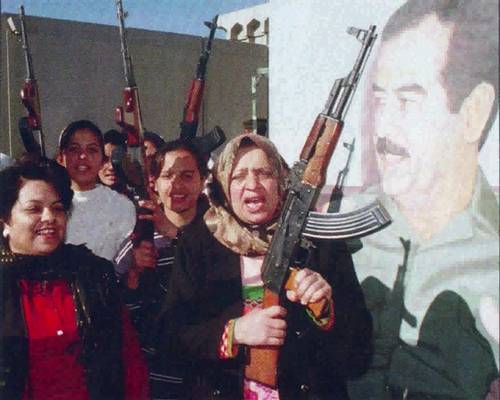János Sugár
14 Sep - 29 Oct 2005
János Sugár
“Typewriter of the Illiterate”
In the DVD Typewriter of the Illiterate János Sugár has brought together numerous images from newspapers and magazines of people bearing Kalashnikov AK 47 machine guns including children in Africa, Mujahadeen in the Afghan Hills and fighters in former Yugoslavia. Computer software is used to make these images morph and flux one into the other, so that the people and the landscape surrounding the gun change but the weapon itself remains a constant presence on the screen. The piece is a simple, almost formal video projection, with the trajectory of the AK 47 being traced and plotted by the computer through space and time, through people and through specific political situations. The work suggests the omnipresence of struggle and violence around the globe and the ways that this has been shaped and mediated by technological innovation. In turn, how this technology has taken on aesthetic and symbolic roles and expressions.
In its early history, the machine gun was often viewed as immoral or inhumane: as a weapon of mass destruction. It was used in colonial struggles - the British Army famously deploying its new Maxim gun in the Matabele war of 1893 - and it did not emerge as a central weapon on the European field of war until World War One. The Kalashnikov itself was developed in Russia in the late 1940s. It was designed as a simple effective piece of technology, cheap to produce and easy to maintain: it has few moving parts and the village blacksmith can repair it. Since then approximately 100 million Kalashnikovs have been built and they have been responsible for more deaths than the atom bomb.
The gun’s distinctive silhouette became a symbol for revolt and a logo for freedom fighters and terrorists in the late twentieth century. It became a logo for revolution. Mozambique has the Kalashnikov on its national flag. Posters have carried its graphic in Africa, the Americas and Europe, and T-shirts bearing its image are easily available in radical-chic clothing outlets in cities throughout the world. Typewriter of the Illiterate travels through these romantic constructions into the complex post-cold war situation that now surrounds us.
János Sugár lives and works in Budapest. Between 1980 and 1986 he was active in the interdisciplinary art group Indigo led by Miklos Erdely. His work has continued to cross disciplines and includes installations, sculptural work, performance, film, video and computer based projects. He has exhibited widely in Hungary and in Europe including Documenta IX and Manifesta 1. Typewriter of the Illiterate will be shown on the third floor at Annely Juda Fine Art. It is the first exhibition of his work in the UK.
“Typewriter of the Illiterate”
In the DVD Typewriter of the Illiterate János Sugár has brought together numerous images from newspapers and magazines of people bearing Kalashnikov AK 47 machine guns including children in Africa, Mujahadeen in the Afghan Hills and fighters in former Yugoslavia. Computer software is used to make these images morph and flux one into the other, so that the people and the landscape surrounding the gun change but the weapon itself remains a constant presence on the screen. The piece is a simple, almost formal video projection, with the trajectory of the AK 47 being traced and plotted by the computer through space and time, through people and through specific political situations. The work suggests the omnipresence of struggle and violence around the globe and the ways that this has been shaped and mediated by technological innovation. In turn, how this technology has taken on aesthetic and symbolic roles and expressions.
In its early history, the machine gun was often viewed as immoral or inhumane: as a weapon of mass destruction. It was used in colonial struggles - the British Army famously deploying its new Maxim gun in the Matabele war of 1893 - and it did not emerge as a central weapon on the European field of war until World War One. The Kalashnikov itself was developed in Russia in the late 1940s. It was designed as a simple effective piece of technology, cheap to produce and easy to maintain: it has few moving parts and the village blacksmith can repair it. Since then approximately 100 million Kalashnikovs have been built and they have been responsible for more deaths than the atom bomb.
The gun’s distinctive silhouette became a symbol for revolt and a logo for freedom fighters and terrorists in the late twentieth century. It became a logo for revolution. Mozambique has the Kalashnikov on its national flag. Posters have carried its graphic in Africa, the Americas and Europe, and T-shirts bearing its image are easily available in radical-chic clothing outlets in cities throughout the world. Typewriter of the Illiterate travels through these romantic constructions into the complex post-cold war situation that now surrounds us.
János Sugár lives and works in Budapest. Between 1980 and 1986 he was active in the interdisciplinary art group Indigo led by Miklos Erdely. His work has continued to cross disciplines and includes installations, sculptural work, performance, film, video and computer based projects. He has exhibited widely in Hungary and in Europe including Documenta IX and Manifesta 1. Typewriter of the Illiterate will be shown on the third floor at Annely Juda Fine Art. It is the first exhibition of his work in the UK.

